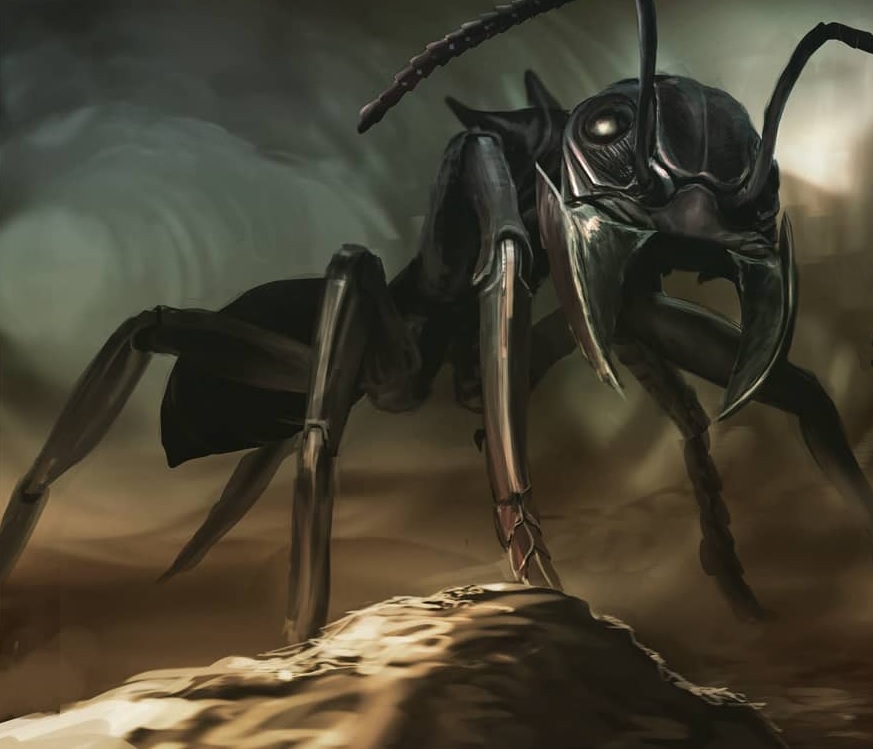Bull Ant (giant)
| Species | insect (myrmecia gargantua) |
| No. Appearing | 3–18 |
| Behaviour | nest |
| Range | desert, savanna, veldt |
| Size | 4 ft. long |
| Weight | 125 lbs. |
| Intelligence | 0 |
| Armour Class | 3 |
| Hit Dice | 4 |
| Action Points | 4 |
| Max. Stride | 19 |
| THAC0 | 18 |
| Hp/Die | d6 |
| Attack Forms | 2: pincers; stinger |
| Damage | (2–8) ; stin |
| Special Attacks | leap, poison |
Giant bull ants are imposing solitary hermaphroditic insects, distinguished by their aggressive hunting behavior. They hunt over a wide area, particularly at night.
When prey is encountered, the creature will rush to attack, leaping up to 15 feet (3 hexes) at the end of its movement (this extra distance is created by the creature rushing forward with its AP, so there is no additional movement cost for the leap). The creature will leap over brush, pits and even walls up to 15 ft. in height. As such, they are viewed with terror by guards on watch.
The giant bull ant prefers to attack at night. It possesses what may be the most powerful insect sting in existence, delivering a dose of quietus poison that will cause 40 damage per dose (10 hp per round, for four rounds), with no adjustment to the saving throw. If the recipient saves against poison, they will still suffer 3 hp/round for four rounds. Additionally, the poison causes a level of agony that makes it impossible for the victim to think or act. This lasts for 2-24 hours.
The poison is resistant to the use of herbs for treatment, reducing their effect by 50%. The poison often kills victims, if the spell neutralise poison is not available. Note that even if the spell is used, the pain from the giant bull ant's sting will linger yet one more hour.
Kills will be partially eaten and the remains dragged back to the nest. In January, virgin queens will emerge, flying into the sky and mating. There will be a swarm of 2-20 queens in an area of 2-3 acres. In strength, these queens are indistinguishable from common bull ants, except that they always have 6 hit points per die. After mating, they will scatter over an area of six miles in diameter, bury themselves and produce 3-30 eggs. 1 to 12 of these will be workers, who as described above will wander and hunt. The queen will survive for nine months, whereupon the remaining 2-20 eggs will emerge the next January.
See Bestiary
